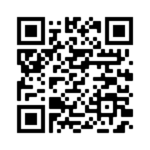
Is your team truly productive or just busy? Is every member making the most of their time on the clock and delivering results? Is the labor of your workforce actually pushing the company forward!
Let’s explore some ways leaders can help employees stay motivated and deliver the best results.
Build A Strong, Cohesive Team
Optimal productivity starts with having the right people in the right place. As the Biz-Group points out, “the most effective teams in the world don’t just happen.” The strongest, most productive teams are a direct result of a leader’s actions. You can’t wait around for the perfect team to naturally emerge. You have to be the architect.
From the start, focus on hiring high quality employees, and pay them well. Take 5 power-players over 10 mediocre employees (see our blog on hiring the best talent). From there, ensure that every person on your team knows who is responsible and accountable for what. When it comes time to make decisions, give everyone on your team a chance to share their perspective. Allow them a role in shaping the company’s goals and directions, and always maintain an open line of communication.
Not only will these actions help build trust between team members and confidence in their leader, but it ensures every person feels like they are an actual part of the company’s vision – not just a contributor to it.
Help Employees Play To Their Strengths
Leaders should be able to identify every employee’s strengths and then guide that employee to utilizing and building on those attributes throughout the workday. People who know and use their personal talents tend to be more engaged with their job and are often more productive – six times more productive, according to a 2014 Gallup study.
Take time with your team to discover and name each member’s best strengths. Assign tasks that utilize those abilities. Recognize how each strength contributes to every project and the overall success of the company. Additionally, keep an open mind yourself and give your employees the room to use their expertise in the most productive way possible.
Set Clear Expectations
It’s not enough for people to simply know their role and what they’re responsible for. Strong productivity relies on your people knowing what they’re expected to do, as well as what they’re expected to produce.
Leaders need to make time for one-on-one sessions with their employees where they can review performance and set specific expectations and KPI’s.Each team member should know what results they need to deliver, the path they need to take to produce them, and how those results play into the overall success of the company.
But here’s the catch: Once you’ve ensured your team members know exactly what’s expected of them, back away and let them work (see The Great Game of Business). Don’t stand over their shoulder or attempt to micromanage the task. Doing so only hurts the trust you’ve built with the team member. You shouldn’t have to get involved unless they ask for help.
Recognize and Appreciate Success
There’s no doubt that, as a leader, your days are busy. But don’t let the stress of your day, or the length of your own task list, keep you from showing appreciation to your team. When one of your employees scores a win or meets a certain goal, recognize and appreciate them for it. And don’t wait until the next one-on-one or annual review. Show appreciation in the moment.
The benefits of a little appreciation are ten-fold. On one hand, it reminds your team member that their contribution is not only recognized, but necessary to the overall success of the company. That alone will motivate them to maintain a high level of productivity. Appreciated employees are happy employees, and happy employees stick around. Employee turnover is not only costly to the company at potentially thousands of dollars, it’s a major obstacle to productivity. It’s difficult to maintain a productive workforce when you have to replace people every few months.
How do you optimize productivity in the workplace? Have you tried any of the above? Share your stories with us in the comments!
